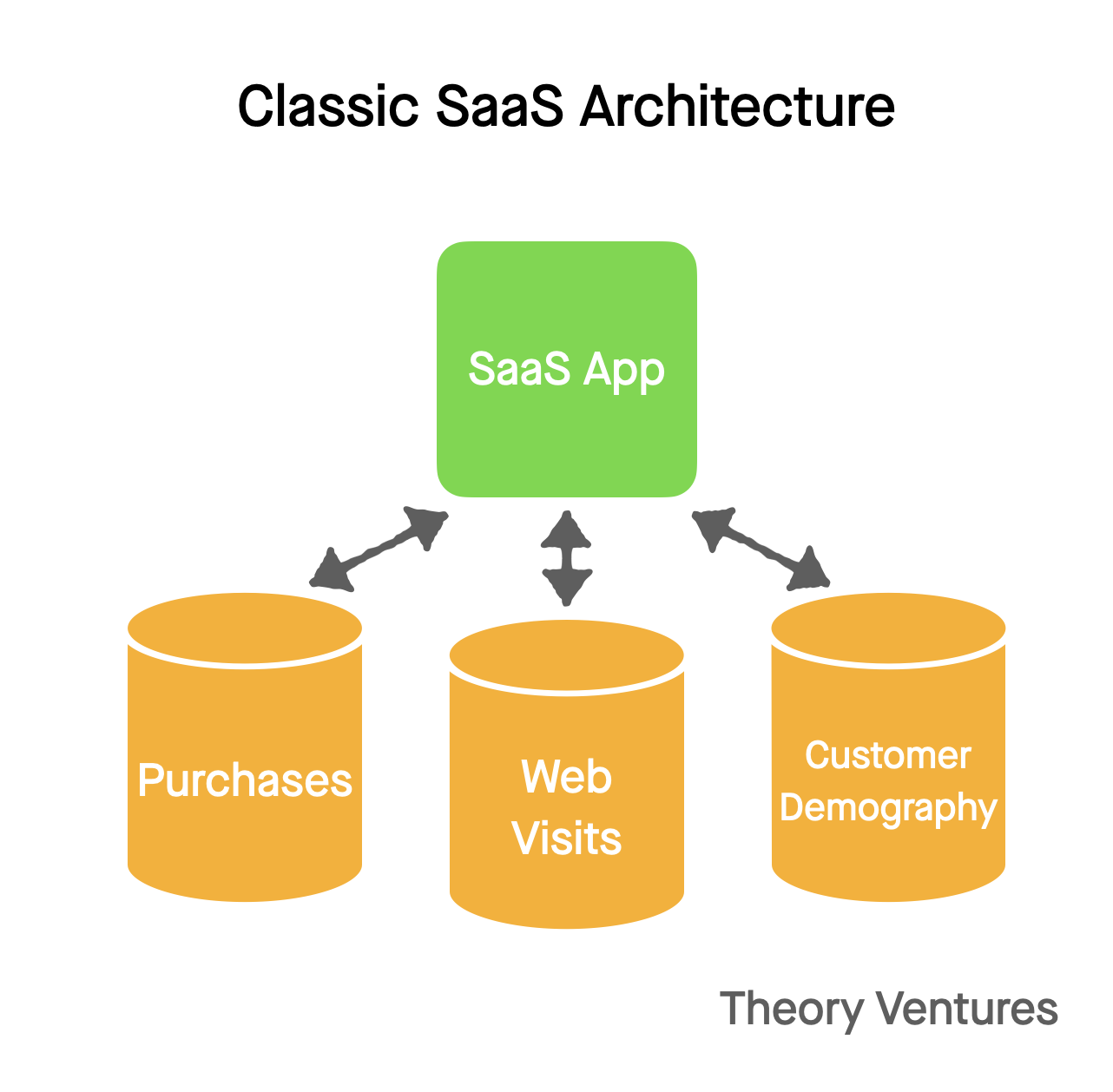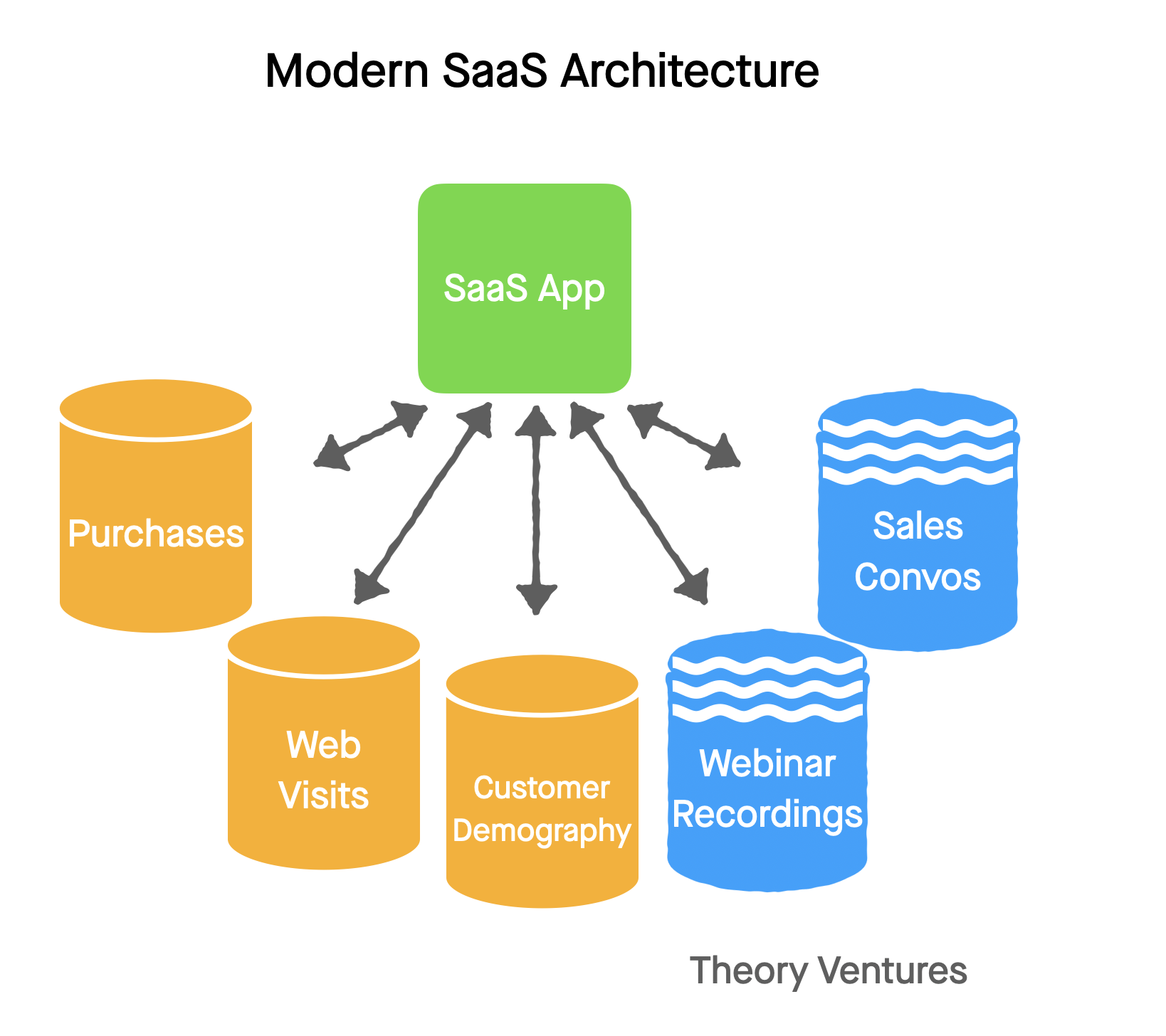Historically, software-as-a-service (SaaS) has been built on databases with structured data, as you might find in an Excel spreadsheet.

But the ability of large language models to extract insights from unstructured information changes this architecture : data repositories like data lakes are becoming essential parts of modern SaaS stacks.
For example, next generation marketing software might ingest structured data from Google Analytics and lead capture software as before. But it also might start to analyze customers’ behavior in online webinars, conversations with customer support and sales teams, and more - all of which is unstructured data stored in video & raw text & audio files.

The fracking of structured and unstructured data will produce insights that software has not previously been able to generate. The companies that take advantage of those insights, combining them in novel ways and potentially automating workflows, will be the leaders in the next wave of software.
Data lakes allow for the storage of both structured and unstructured data at scale. And with advanced analytics powered by AI, this data can be processed and queried in flexible ways not possible with traditional databases. The ability to gather insights across disparate data silos will be a key competitive advantage.
Inside to loan that separate the next generation software companies but the chaining together of different workflows that were not possible before. For example, synthesizing insights across sales and customer support conversations to prioritize product road maps.
In the past, sales and customer support teams have relied on stories & individual relationships with product leaders to guide and steer product road maps. But with every conversations now recorded, accessible, clustered and analyzed, product teams can hear the pulse of the market for themselves.
As a result, we expect to see data lakes become a core part of the architecture for next-gen software applications. Companies that leverage data lakes to drive predictive insights, personalization, and process automation especially across domains will disrupt incumbents.